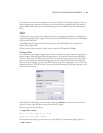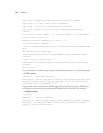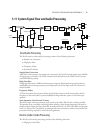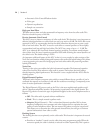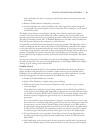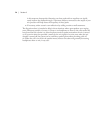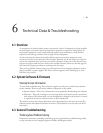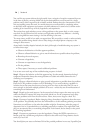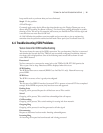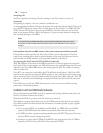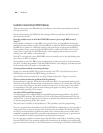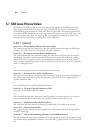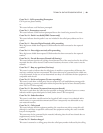TECHNICAL DATA & TROUBLESHOOTING | 77
keep careful track so you know what you have eliminated.
Step 6. Fix the problem.
A Final ought…
Constantly apply sanity checks. More than three decades ago, the Firesign eater put out an
album called “Everything You Know is Wrong”. Use that as your guiding philosophy in trouble-
shooting a Telos Two set-up. For example, just because you checked the Telco line last night and
it was fine does not mean that it’s OK now.
At 3:00 AM when the problems seem intractable and you are ready to give up engineering,
remember that the system has worked and will work. Never panic–you are smarter than it is.
6.4 Troubleshooting ISDN Problems
Status Screen for ISDN troubleshooting
is screen shows the status of the ISDN connection. You can determine if the line is connected
and whether the line and the Telos TWOx12 are successfully configured. In addition, informa-
tion about calls is displayed here. One of the following status words will be shown for each
active ISDN channel:
Deactivated
No line connected, or connected to wrong jack on the TWOx12. OR, ETS 300 permits the
Telco to put a line to sleep. Deactivated will be displayed when this occurs
SPID Pending
e SPID has been sent to network (DMS Cust. And Natl I-1 only). Network has not ap-
proved SPID.
SPID Error
e SPID is incorrect or line is grossly misconfigured
Ready
e unit sees a live ISDN S interface (ie external NT1 is present or internal NT1 has completed
startup). If the SPIDS are present, they have been sent and approved.
Pending Seize
Outgoing call in process; Request for call has been sent to Telco switch.
Seized
Outgoing call in process; Telco switch has acknowledged the call request.
Call Proceeding
Outgoing call in process; Telco switch waiting for routing info from network.
Outgoing Ring
Outgoing call in process; far end has generated a call alert signal
Disconnecting
Request to disconnect has been made. Awaiting acknowledgment.
Incoming Ring
An incoming call request has been detected and is being processed.



